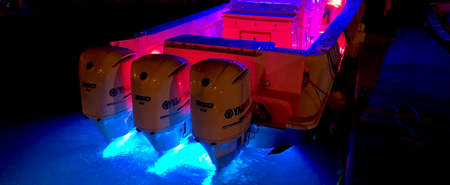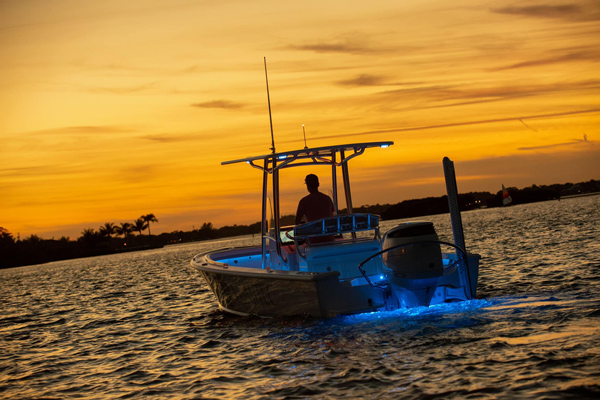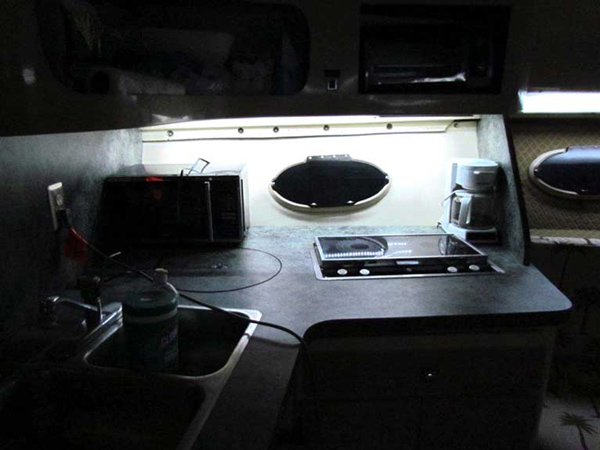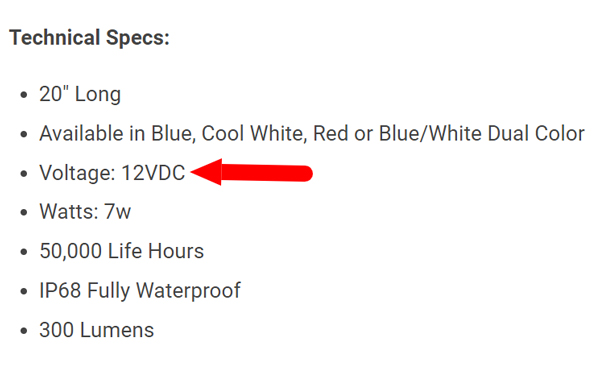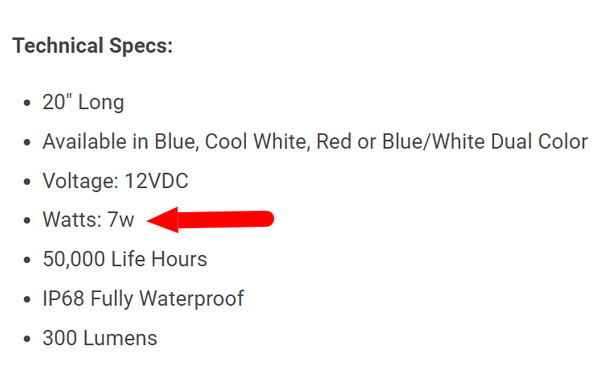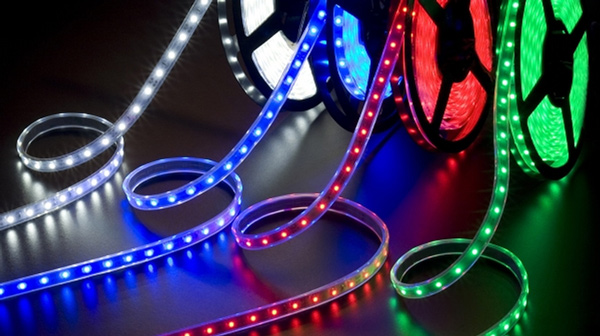Posted by Apex Lighting on 27th Dec 2022
Waterproof LED Strip Lights: 3 Easy Tips to Get Your Money’s Worth
Are you ready to customize your boat and upgrade your boating experience with LED strip lights?
With a little research, you’ll find many different types, which is good because more options mean more variety.
But with so many options available:
- How do you choose the right one for your boat?
- How waterproof do they have to be?
- What quality markers must you look out for?
Take a look at these three easy tips for choosing waterproof LED strip lights and getting the biggest bang for your buck.
1 - Always Verify IP Ratings
When buying waterproof LED lights, always verify the IP ratings as they indicate how waterproof the lights are.
Because there are different types of waterproof LED strip lights with varying degrees of protection, don’t simply buy the first option you find with a waterproof rating. Always choose lights with IP ratings that match your intended use.
For example, if you plan to install the lights in a place with constant exposure to water splashes, anything with an IP rating below IP67 is simply asking for trouble.
But for interior lights on larger boats, you might be able to get away with an IP52 rating since the lights will only need protection from dampness rather than splashes or submersion.
The table below shows the seven types of LED strip lights in terms of waterproofness, their protection level, and their applications.
| Item | Protection Level | Application |
| IP20 | Not waterproof | Designed for indoor use away from all kinds of fluids. Not suitable for most boating use cases |
| IP52 Silicone Coating | Dustproof with poor waterproofing performance | Suitable for dry or slightly-damp areas. Not recommended for areas where water might splash |
| IP65 Silicone Tube | Dustproof and waterproof | Suitable for wet areas with occasional splashes of water, like a boat’s transom. Not recommended for prolonged exposure to constant splashing |
| IP65H Heat Shrink Tube | Dustproof and waterproof | Suitable for wet areas with occasional splashes of water, like a boat’s transom. Not recommended for prolonged exposure to constant splashing |
| IP67 Full Silicone Encased | Dustproof with up to 30 minutes of submersion protection | Suitable for areas that will occasionally be immersed for brief periods. Do not use underwater |
| IP67 Nano Coating | Dustproof with 30 minutes of submersion protection | Suitable for areas that will occasionally be immersed for brief periods. Do not use underwater |
| IP68 Full Polyurethane Encased | Dustproof with protection against prolonged submersion | Suitable for prolonged use underwater |
2 - Pay Attention to Input Voltage and Power Supply
Another thing to take note of is the strip’s required input voltage and power supply.
Generally, waterproof LED strip lights are designed to be used with a 12V or 24V DC power supply. For a boat that runs on AC power, you must install a DC power supply. This will convert AC power to the low-voltage DC power required to operate the lights.
How to Choose the Right Power Supply for Your Waterproof LED Strip Lights
Choosing the right power supply for your LED strip lights is vital because choosing one without enough power capacity can damage the strip permanently.
These three simple steps will help you select the perfect power supply for your needs.
Step 1 - Determine the LED Strip’s Voltage
The first step is to find out what the LED strip’s voltage is. This will usually be listed in the product description or technical specifications, like so:
When you find it, check if the voltage rating on the power supply matches the LED strip's. For instance, an LED strip rated at 24V must be paired with a 24V power supply.
Step 2 - Determine the LED Strip’s Power Draw
Next, determine how much power the LED strip will draw. This is known as the power draw and is usually listed in the product description as either Watts per meter (W/m), Amps per meter (A/m), or simply Watts (W) or Amps (A).
In this example, the strip’s total wattage is listed as 7 Watts.
While it isn’t listed here, we can calculate the Amperage or current using the formula P = V x A, where:
- P is Wattage
- V is Voltage
- A is Amperage
To find the Amperage for this example, simply substitute 12 for V and 7 for P as follows:
7 = 12 x A
A = 1.71 Amps
In simpler terms, this means that at 12V, this LED strip will draw about 7 Watts or 1.71 Amps.
Next, find out if the power supply's rating is equal to or greater than the strip's rating. For this example, the power supply must be able to deliver 7 Watts or 1.71 Amps at the very least.
Step 3 - Make Sure the Connectors Are Compatible
Finally, look at the connectors on both the LED strip and the power supply. Are they compatible? If they aren't, you’ll need to use an adapter to connect the power supply to the LED strip.
3 - Look For Important Quality Markers
It can be quite tricky to tell high-quality waterproof LED strips apart from the many low-quality options on the market. But there are a few key factors that can help anyone spot the difference:
1 - The Composition and Quality of the Circuit Board
Especially for higher-powered LED strips, the quality and specs of the circuit board must be top-of-the-line. Because of the high amount of current that must flow through every section, the board must contain sufficient amounts of copper.
You’ll want LED strips with a minimum copper weight of 2 oz, or ideally, 4 oz. This will prevent the higher power from damaging the circuit board over time. Any less and the strips will be less efficient as a result of voltage drop.
While voltage drop usually doesn't affect the performance of the LEDs themselves, it will cause the strips to lose a lot of power due to electrical resistance. More resistance means more heat. If the LED strips are installed near anything that’s heat-sensitive, this can be problematic.
2 - The Quality and Density of the LED Emitters
One of the key determinants of the quality, efficiency, and stability of the light output is the LED emitters themselves.
For the best results, be careful with waterproof LED strips that claim to be high-powered despite having a low LED density. This is often an indication of overdriven LED emitters, which can lead to premature failure.
3 - The Surface of the LED Strip
On the surface of higher-quality LED strips, there’s often an extra layer of white paint that serves to improve the reflectivity of light, thereby increasing the overall light output.
Cheaper lower-quality options will usually skip this step, keeping the color of the copper surface exposed. This affects both the brightness and the color of the light since it’s now being reflected off a brown surface instead of the more reflective white. This will be more pronounced if the light is installed in an aluminum channel.
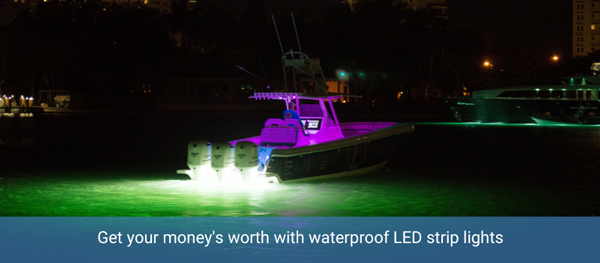
Get Your Money's Worth With Waterproof LED Strip Lights
To get the best-quality waterproof LED strip lights, there are quite a few things you must consider. From choosing the right power supply to knowing what quality markers to look for, things can quickly get overwhelming.
Buying from a reputable supplier with a proven track record will help you avoid any headaches.
Apex Lighting has a 26-year track record of providing high-quality lights and accessories for boats, yachts, and boat docks, as well as installation services.
Whether you need waterproof LED strip lights or a power supply, you can rely on Apex Lighting to deliver.
To level up your boating experience, call Apex Lighting at 954-421-3267 or leave a message.
“Shipped and delivered fast. Definitely will be doing all my ordering through Apex for all my lighting needs.” — Tim Blair

